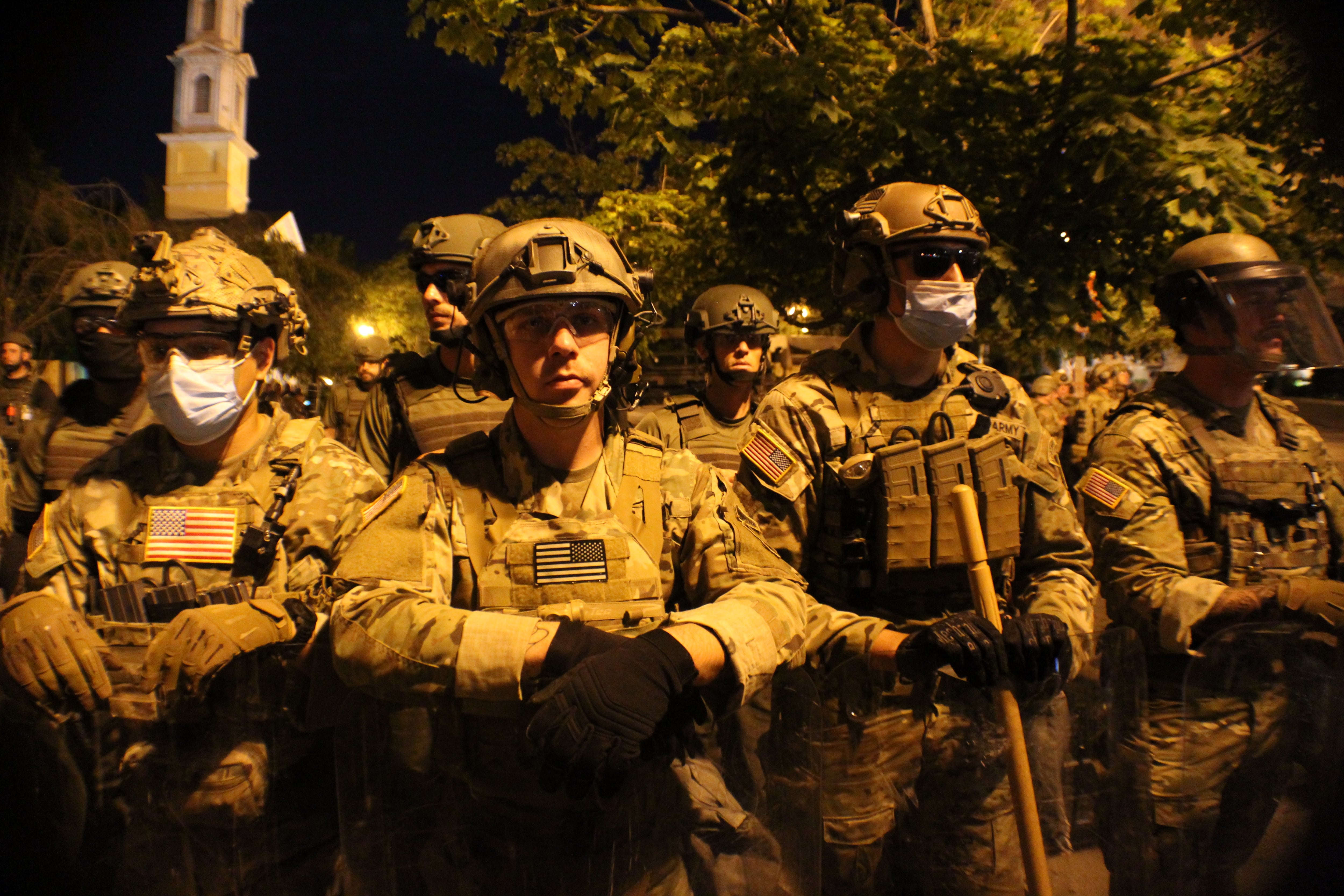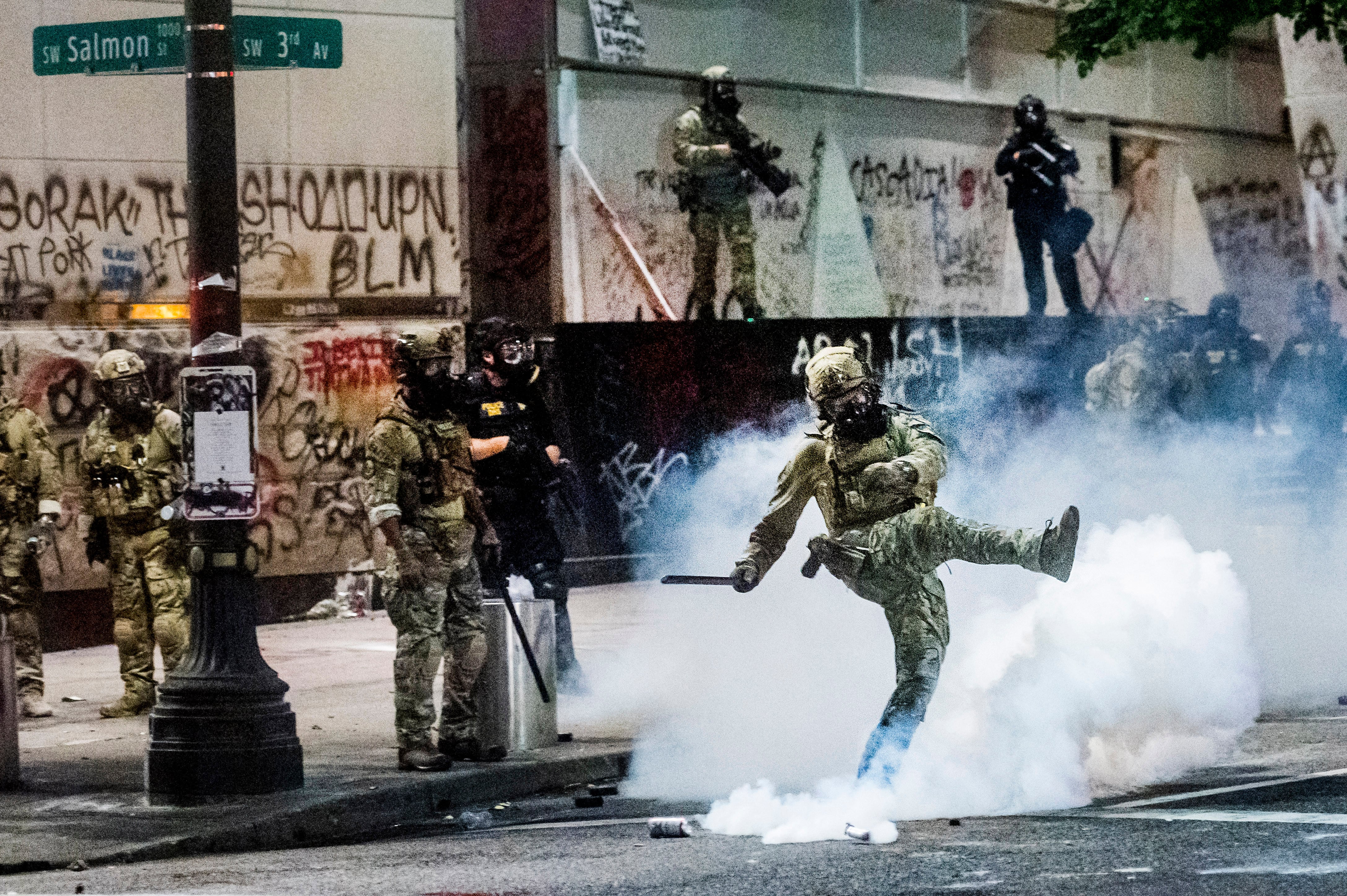Sen. Tammy Duckworth, D-Ill., introduced legislation Wednesday that would prohibit federal law enforcement from wearing camouflage patterns domestically, “since they can easily be confused for military personnel when doing so,” according to her office.
The move follows complaints this summer that camo-clad local and federal law enforcement officers, called in to handle protests across the nation, have confused the public about the role the military is playing domestically.
The bill, called the Clear Visual Distinction Between Military and Law Enforcement Act, would apply only to federal law enforcement officers and includes an exception for those engaged in “a discreet tactical operation” that could require camouflage patterns, according to Duckworth’s office.
However, the legislation would require a biannual report to Congress — including dates and justifications — for federal police units that invoked that exception. It was backed by senators Ron Wyden, D-Ore.; Tim Kaine, D-Va.; Jeff Merkley, D-Ore.; and Cory Booker, D-N.J.
Duckworth, a member of the Senate Armed Services Committee, said the legislation was inspired by civil unrest this summer in the wake of the May 25 killing of George Floyd, a Black man who prosecutors say was killed by a white Minneapolis police officer during an arrest.
RELATED

“The Trump administration’s decision to deploy federal law enforcement officers outfitted in camouflage uniforms in response to those protesting the death of George Floyd and other Black Americans blurred the lines between military service members and law enforcement officers while causing even more fear and division,” Duckworth said in a statement. "We must prevent this from happening again
National Guard personnel were activated to assist with unrest across the country, including in Washington, D.C., in the early part of the summer.
At the height of the unrest, governors in 33 states and the District of Columbia activated more than 41,500 National Guard members to assist state and local law enforcement. But in some places, including the protests in Portland, Oregon, Guard personnel were not present.
Still, the Department of Homeland Security officers who were there often wore the same type of camouflage that military personnel are issued, making the situation ripe for misinformation about the role the Pentagon is playing domestically.
Gen. Mark Milley, chairman of the Joint Chiefs acknowledged the issue at a congressional hearing in July.
“Uniforms, just simple uniforms as opposed to other types of equipment, that became an issue," Milley said to lawmakers. “You want a clear definition between that which is military, and that which is police, in my view."
RELATED

Defense Secretary Mark Esper has also said through his chief spokesman that he wants the public to be able to differentiate between the police and military personnel.
His concerns were raised as part of a DoD after-action review that is looking at the National Guard’s response to protests this summer, chief Pentagon spokesman Jonathan Hoffman said in July.
“[Esper] has expressed his concern that in some cases, law enforcement appropriately performing law enforcement duties were misconstrued as military personnel,” Hoffman said. “I don’t have any guidelines from the secretary … but he has expressed an interest in the topic.”
In some cases this summer, there was even confusion about whether Guard personnel were actually active-duty troops.
At a protest in Washington, D.C., in early June, the presence of soldiers — whose uniforms were adorned with Special Forces shoulder insignia under Airborne tabs — sparked rumors about the arrival of active-duty troops, a move that would have been widely viewed as an escalation by the federal government.
Those rumors were false, and the troops were simply from a Guard unit with SF personnel. But the confusion highlighted the tensions in how federal police, Guard and active-duty personnel are used in U.S. cities.
Kyle Rempfer was an editor and reporter who has covered combat operations, criminal cases, foreign military assistance and training accidents. Before entering journalism, Kyle served in U.S. Air Force Special Tactics and deployed in 2014 to Paktika Province, Afghanistan, and Baghdad, Iraq.



